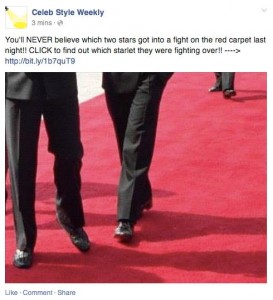Did the Clock Run Out on TikTok? For Now, No.
Well, it happened—sort of. The TikTok ban, slated to go into effect on Jan. 19, 2025, arrived a few hours early, as users began to receive messages that the app was no longer available around 10:30 p.m. Eastern time on Jan. 18.
Memes mourning the loss of TikTok and maligning Instagram Reels immediately began to make their rounds (shoutout to uncontested brand troll leader Duolingo for this video), and by the early-morning hours of Jan. 19, TikTok users were beginning to adjust to a new normal without their FYP.
Shortly after noon on Jan. 19, something interesting happened—TikTok was restored. U.S.-based users were able to open the app and scroll again, greeted with a message that read, “Thanks for your patience and support! As a result of President Trump’s efforts, TikTok is back in the U.S.! You can continue to create, share, and discover all the things you love on TikTok.”
But is TikTok back long-term? That remains to be seen.
In August 2020, during his first term, President Trump issued an executive order claiming that TikTok was capturing massive amounts of information about Americans that could be used by the Chinese government. The order was later blocked by a federal judge and then dropped by the Biden administration, in favor of the Protecting Americans from Foreign Adversary Controlled Applications Act (PAFACA, the TikTok ban that was semi-enacted over the weekend).
President Trump appeared to change his position in March 2024, when he came out against the bill to ban the app or force a sale. Over the weekend, on Truth Social, Trump posted, “I will issue an executive order on Monday to extend the period of time before the law’s prohibitions take effect, so that we can make a deal to protect our national security. The order will also confirm that there will be no liability for any company that helped keep TikTok from going dark before my order.”
TikTok has also issued a statement that ends, “It’s a strong stand for the First Amendment and against arbitrary censorship. We will work with President Trump on a long-term solution that keeps TikTok in the United States.”
What that long-term solution looks like remains to be seen, as ByteDance (TikTok’s parent company) has shown no interest in a potential sale to a U.S.-based company. Trump has floated a joint venture between ByteDance and a U.S.-based company, but PAFACA in its current state prohibits more than 20% ownership by a foreign company. Congress could move to change the law, which would pave the way for TikTok to be partially owned by a U.S. company.
In the meantime, here’s what we recommend for users and for brands celebrating the return of TikTok:
- Continue to download your data and save any content you’re posting on TikTok to your computer or phone.
- Follow your favorite creators on other platforms.
- Diversify your media mix and consider shifting paid media dollars that were previously allocated to TikTok to other social networks that are less volatile.
























